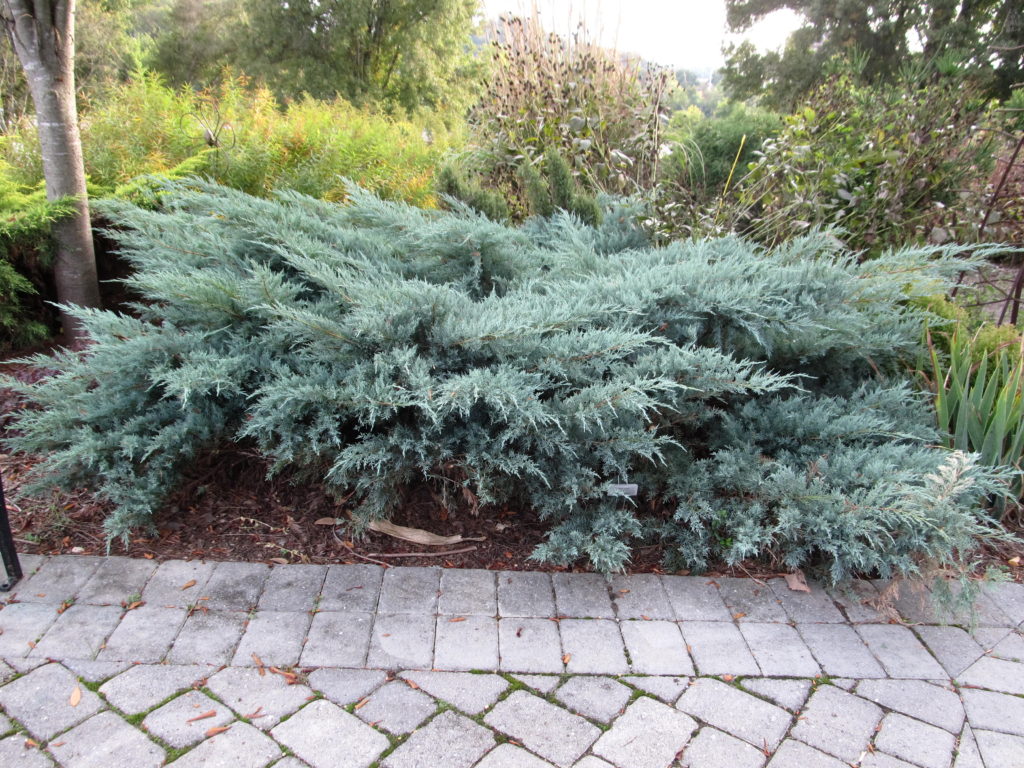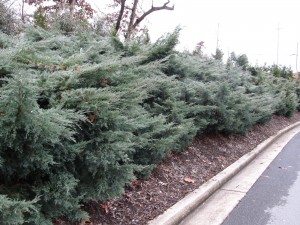Some people rate junipers as over-planted or bygone landscape plants. Juniperus virginiana ‘Grey Owl’ is a cultivar of our native Eastern Red Cedar (USDA hardiness zones 3 to 9). Eastern red cedar is actually a juniper. This flat spreading evergreen develops into a reliable ground cover not plagued with disease and pest problems observed on some other juniper species.
Grey Owl grows under open full sun in a variety of soils with adequate drainage. It grows 2 – 3 feet high and 4 – 6 feet wide. Two-year established plants are cold, heat, and drought tolerant. Eastern red cedars are resilient of windy sites and urban air pollutants.
New transplants start out slowly, but eventually toughen up and grow robustly. Their mature spread may not make them your first choice for planting in a small garden.
The most striking feature of Grey Owl is its silvery-gray foliage which shines all year long. In the winter landscape its silvery scaly foliage becomes tinged with purple, but its verdant color returns by the first day of spring.
In the Southeast U.S., Grey Owl is often seen planted as a roadside hedge along medians where little maintenance is provided. In some years shrubs may be infested by bagworms. Deer rarely trouble red cedars.
‘Holbert’ is another blue needle form wit feathery limbs are larger and low spreading plant to 2-3 feet tall and 8-10 feet wide. Low-spreading, bluish-green needles, and long extended shoots almost parallel to ground; Good blue foliage color holds well through the winter. ‘Holbert’ is a male cultivar of ‘Grey Owl’ and produces no cones.
Female plants produce loads of blue waxy berries or cones which attract loads of hungry birds over the winter.



 Posted in
Posted in 
